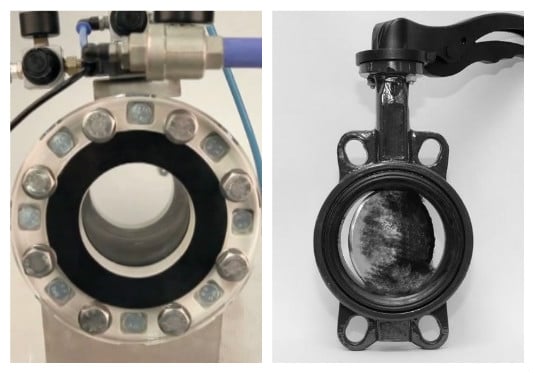Pinch Valves Vs. Butterfly Valves with Silo Safety
Controlled filling systems using butterfly valves are occasionally used on silo safety systems, but the flow through the valve is restricted by the butterfly disk, slowing down the filling process. The valve seat becomes contaminated with trapped product, resulting in spillage, waste and cross-contamination. The butterfly disk also wears very quickly increasing maintenance down time.
The use of a pinch valve eliminates these problems immediately.






